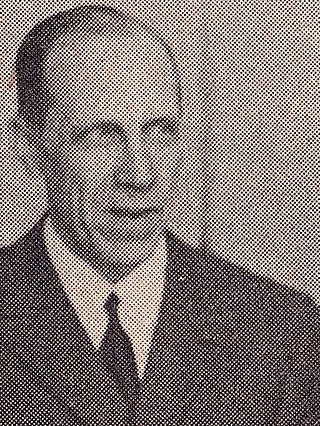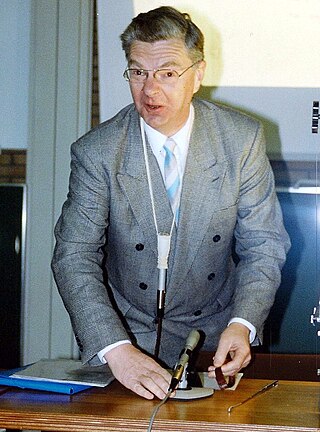
The Royal Academy of Turku or the Royal Academy of Åbo was the first university in Finland, and the only Finnish university that was founded when the country still was a part of Sweden. It was founded in 1640. In 1809, after Finland became a grand duchy within the Russian Empire, it was renamed the Imperial Academy of Turku. In 1828, after the Great Fire of Turku, the institution was moved to Helsinki, in line with the relocation of the capital of the grand duchy. It was finally renamed the University of Helsinki when Finland declared independence in 1917.

The University of Helsinki is a public university in Helsinki, Finland. The university was founded in Turku in 1640 as the Royal Academy of Åbo under the Swedish Empire, and moved to Helsinki in 1828 under the sponsorship of Tsar Alexander I. The University of Helsinki is the oldest and largest university in Finland with the widest range of disciplines available. In 2022, around 31,000 students were enrolled in the degree programs of the university spread across 11 faculties and 11 research institutes.

Åbo Akademi University is the only exclusively Swedish language multi-faculty university in Finland. It is located mainly in Turku but has also activities in Vaasa. Åbo Akademi should not be confused with the Royal Academy of Åbo, which was founded in 1640, but moved to Helsinki after the Turku fire of 1827 and is today known as the University of Helsinki.

The University of Turku is a multidisciplinary public university with eight faculties located in the city of Turku in southwestern Finland. The university also has campuses in Rauma and Pori and research stations in Kevo and Själö.

John Edvin Vikström is a Finnish priest. He served as the Archbishop of Turku and Finland from 1982 to 1998.

Johan Gadolin was a Finnish chemist, physicist and mineralogist. Gadolin discovered a "new earth" containing the first rare-earth compound yttrium, which was later determined to be a chemical element. He is also considered the founder of Finnish chemistry research, as the second holder of the Chair of Chemistry at the Royal Academy of Turku. Gadolin was ennobled for his achievements and awarded the Order of Saint Vladimir and the Order of Saint Anna.
Jean-Raymond Abrial is a French computer scientist and inventor of the Z and B formal methods.

Carl Reinhold Sahlberg was a Finnish naturalist, primarily an entomologist specializing in beetles. He was the father of entomologist Reinhold Ferdinand Sahlberg (1811-1874), grandfather of entomologist Johan Reinhold Sahlberg (1845-1920), and great grandfather of Uunio Saalas (1882-1969).

Michael J. Butler is an Irish computer scientist. As of 2022, he is professor of computer science and Dean of the Faculty of Engineering and Physical Sciences at the University of Southampton, England.
Johan Peder Olsen is a Norwegian political scientist, and professor emeritus in political science at the University of Bergen, known for his work on new institutionalism.
Jan Östen Hjärpe is a Swedish Islamicist and a professor emeritus in Islamic studies at the Centre for Theology and Religious Studies at Lund University.
Turku Centre for Computer Science is a joint department of University of Turku and Åbo Akademi University. TUCS was founded on March 21, 1994. The mission of TUCS is to coordinate the education, research and societal interaction of the affiliate Universities in the field of ICT. The TUCS office facilities are located in Turku in the Turku Science Park area.

Grzegorz Rozenberg is a Polish and Dutch computer scientist.
Kaisa Sere was a Finnish computer scientist, specialising in research into formal methods.
Karl Vilhelm Helmer Ringgren, was a Swedish theologian.

Lars Erik Taxell, was a Finnish legal scholar and politician. He was the leader of the Swedish People's Party of Finland in 1956–1966. He was also the Rector of the Åbo Akademi University in Turku, Finland, in the 1950s and its chancellor in the 1980s.

Michel Sintzoff was a Belgian mathematician and computer scientist.
Ulf Arne Söderblom was a Finnish conductor and music professor. He was the principal conductor of the Finnish National Opera from 1973 to 1993 and was a key figure in the revival of the Savonlinna Opera Festival. A champion of Finnish music, he has conducted the world premieres of several works by Finnish composers including Kokkonen's The Last Temptations and Sallinen's Kullervo and The Horseman.

The Sibelius Museum is a museum of music, named after the Finnish composer Jean Sibelius. The museum is located close to Turku Cathedral in the historical city centre of Turku on the southwest coast of Finland. It is the only museum devoted to music in Finland. The museum houses a wide collection of historical music instruments from around the world. The archives of the museum include documents The museum was first founded during the 1920s as a seminar for the Department of Musicology at Åbo Akademi University, and has later developed into its own department. The Museum is currently organised and funded by the Åbo Akademi Foundation. The current building was built and opened in 1968 and it was designed by architect Woldemar Baeckman.

Nils Abraham af Ursin was a Finnish physician, anatomist, and rector of the Åbo Akademi University. He was knighted in 1845.












